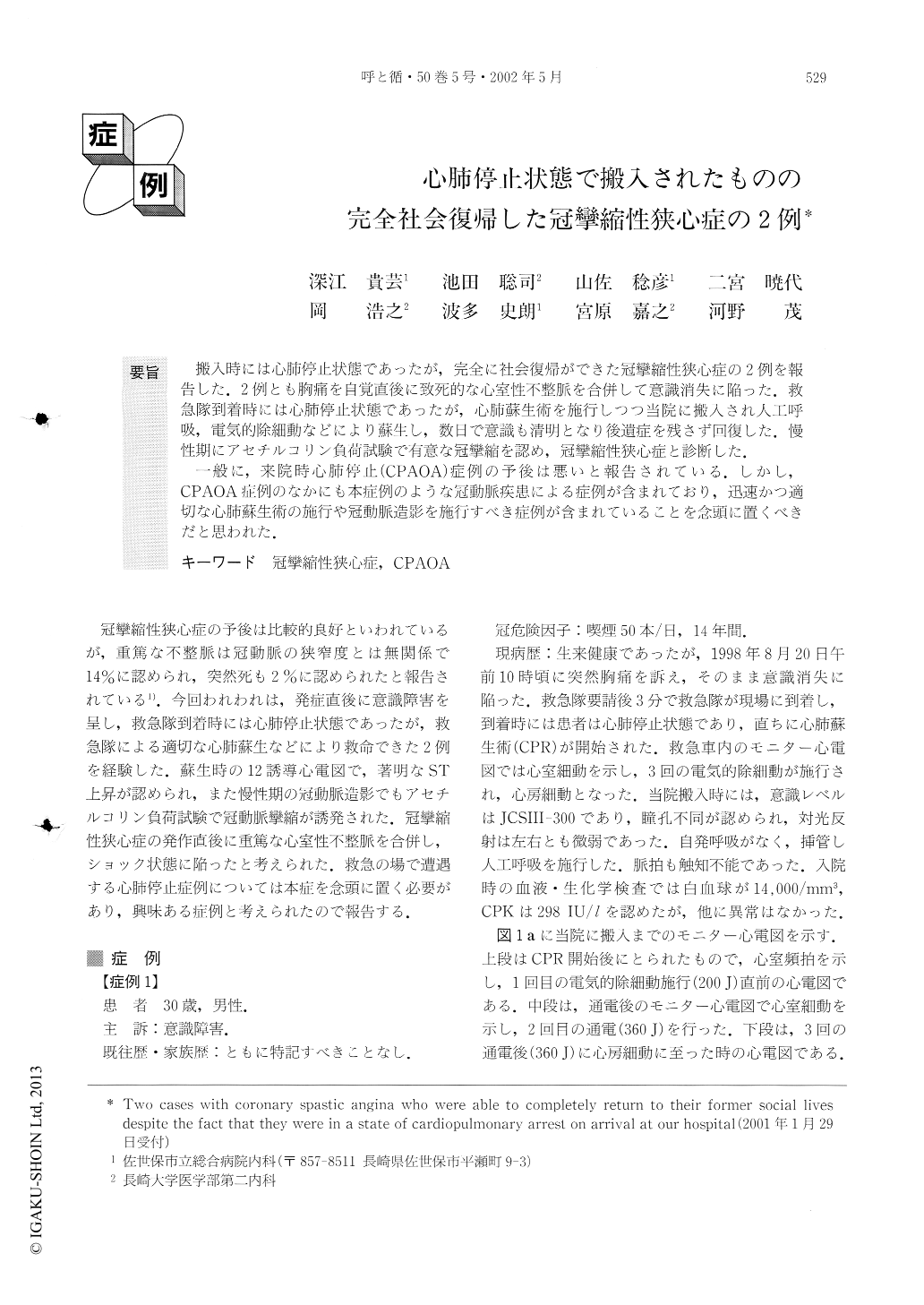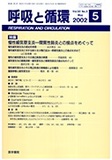Japanese
English
- 有料閲覧
- Abstract 文献概要
- 1ページ目 Look Inside
搬入時には心肺停止状態であったが,完全に社会復帰ができた冠攣縮性狭心症の2例を報告した.2例とも胸痛を自覚直後に致死的な心室性不整脈を合併して意識消失に陥った.救急隊到着時には心肺停止状態であったが,心肺蘇生術を施行しつつ当院に搬入され人工呼吸,電気的除細動などにより蘇生し,数日で意識も清明となり後遺症を残さず回復した.慢性期にアセチルコリン負荷試験で有意な冠攣縮を認め,冠攣縮性狭心症と診断した.
一般に,来院時心肺停止(CPAOA)症例の予後は悪いと報告されている.しかし,CPAOA症例のなかにも本症例のような冠動脈疾患による症例が含まれており,迅速かつ適切な心肺蘇生術の施行や冠動脈造影を施行すべき症例が含まれていることを念頭に置くべきだと思われた.
We encountered 2 patients with vasospastic angina who were able to completely return to their former social lives despite the fact that they were in a state of cardiopulmonary arrest on arrival at our hospital (CPAOA) . The condition of both patients was compli-cated by lethal ventricular arrhythmia immediately after their awareness of chest pain, resulting in loss of consciousness. Although they were in the state of CPA when the rescue personnel arrived, cardiopulmonary resuscitation (CPR) was performed while they were being transferred to our hospital. These patients were successfully resuscitated by artificial respiration and direct current cardioversion without sequelae, resulting in their recovery of clear consciousness within a few days. Because severe coronary spasm was induced by acetylcholine provocation coronary angiography during the stable phase, these patients were diagnosed as hav-ing vasospastic angina.
In general, the prognosis of CPAOA patients has been reported to be poor. However, it should be noted that some patients with CPAOA can be saved and return to their former social lives. Needless to say, immediate and appropriate CPR by the rescue personnel is required. Therefore, it is necessary to educate the general population about the importance of CPR

Copyright © 2002, Igaku-Shoin Ltd. All rights reserved.


